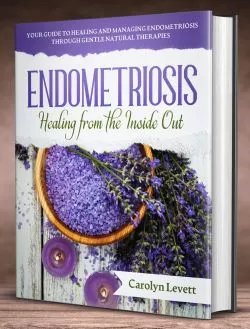History of Endometriosis

Endometriosis seems to be rapidly on the increase with more that 176 million women and girls around the world today who suffer from the disease. Sometimes it can help medical researchers to go back in history to study illness. It can help to put disease's and illness into context.
However there is limited information about endometriosis from the past. It may not seem of relevance for some sufferers to find out about this disease historically, but for others it may shed some light by finding out how common endometriosis was in the past, in comparison to the statistics we have today.
Comparisons can also be made of life-styles, possible treatments, environmental issues, quality of diet and general health, living standards, treatment and attitude towards women, and various other factors.
Here are the few historical finding about endometriosis :
· A recent article from the History Department at the State University of New York notes that endometriosis was described in European history at least 300 years ago
· The first detailed description of wide ranging endometriosis was put forward by Daniel Shroen in 1690
· Endometriosis was first reviewed in scientific literature in 1860, by Austrian pathologist Karl Freiherr von Rokitansky. He referred to the disease in his writings as simply “an adenomyoma”.
· Prior to 1921, there were only 20 reports of the disease in world-wide medical literature
· In 1927, endometriosis was formally described by Dr John Sampson, when he presented a paper identifying 13 patients in whom the presence of endometrial tissue was observed during abdominal surgery
· The “Encyclopaedia of Medical History” published in 1985 did not have a mention for endometriosis
There could be many reasons why there are so few facts about endometriosis in history. Many women may have gone through life with endometriosis, without ever having been diagnosed. This would be especially so with attitudes towards women regarding their reproductive health within the orthodox medical profession, which would have been nearly all male.
Historically, if women voiced their concerns over their reproductive health they were usually told that they were being neurotic or else it was all in the head. This situation is still common today.
Many women would have started their families at an earlier age than they do now, in industrialised countries. This would have helped to ward off the onset of the disease, and women were having bigger families in the past.
Until 20 years ago, the only way to do a definitive diagnosis for endometriosis was to undergo major abdominal surgery. This was the case before the advent of the laparoscope and key-hole surgery.
There probably were many cases of endometriosis in history, but they went undiagnosed. But we are not looking at the same sort of numbers that we are looking at today.
Reference:
https://en.wikipedia.org/wiki/Endometriosis
https://www.ncbi.nlm.nih.gov/pubmed/24853333
https://onlinelibrary.wiley.com/doi/abs/10.1002/9781444398519.ch1
 As featured in:
As featured in:











